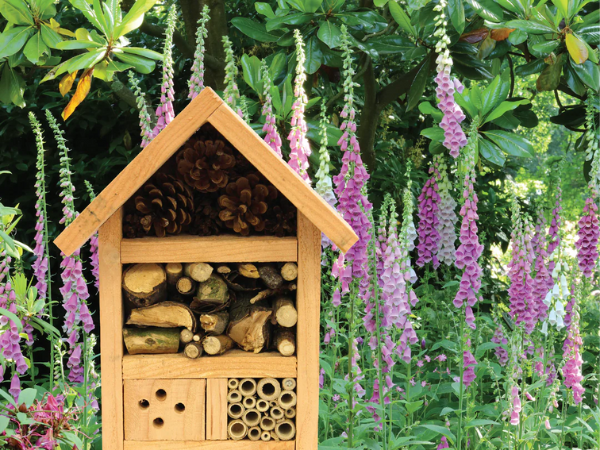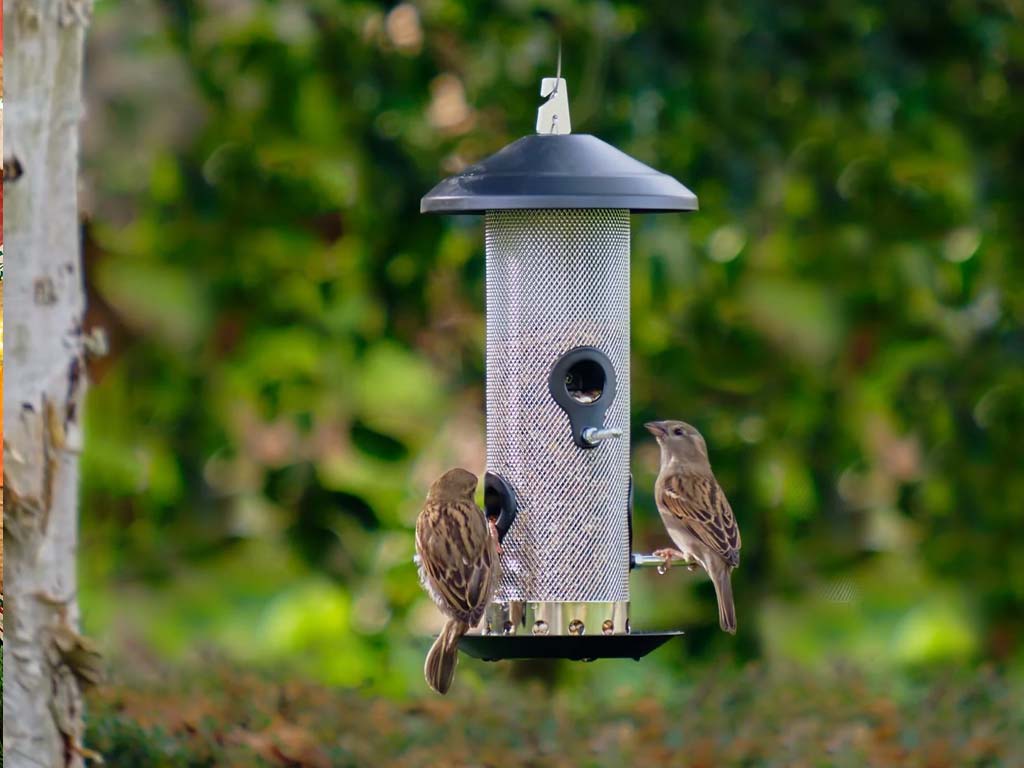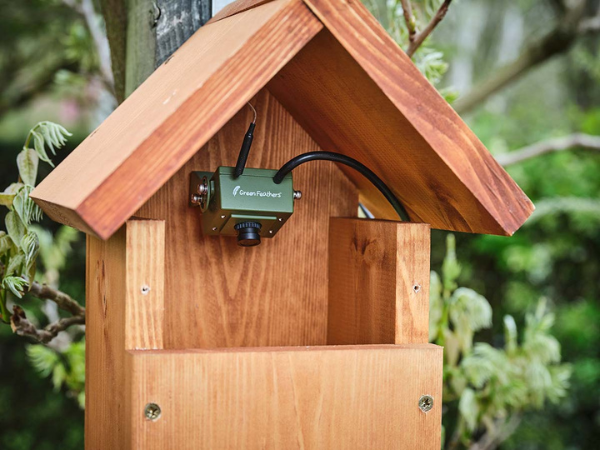Whether you’re already a keen photographer or just a nature lover hoping to start a new hobby, getting involved with wildlife photography can be an incredibly rewarding experience. Waiting for the right shots takes a lot of patience – especially when you’re trying to capture footage of small or skittish creatures – but it'll all be worth it in the end when you have stunning images and videos you can look back on for years to come. Not many people have the privilege of seeing wild animals thriving in their natural habitats, but you can become part of this exclusive group thanks to your wildlife photography.
However, investing in a high-quality wildlife camera is only the beginning. To get the most out of your new wildlife photography hobby, it’s a good idea to invest in several wildlife camera accessories that make it easier to capture the footage you want and improve the quality of the final product. Not sure where to start? Here are 18 essential wildlife camera accessories for any budding photographer:
1. Multiple cameras
Naturally, the most important piece of equipment is your camera. For beginners, this could be an inexpensive point-and-shoot camera or even your smartphone camera if you’re not ready to invest in a separate camera yet. As you gain more confidence and want to capture higher-quality photos, you can eventually move on to a DSLR or mirrorless camera, both of which take clean, professional-looking photos at very fast shutter speeds.
This is fantastic for wildlife photography because the fast shutter speeds allow you to capture cleaner, sharper shots of moving subjects, such as birds in flight. Plus, with a high-quality digital camera, you’ll be able to store thousands of photos on your memory cards, so you can keep practising and wait for the right moment to get the perfect shot.
However, you don’t have to stop at just one camera. In fact, investing in multiple cameras is a great idea in wildlife photography because your subjects are very diverse and unpredictable! You can have different cameras for different purposes and locations, such as a DSLR camera and tripod for more precise, stationary shots and an action camera like a GoPro to shoot on the go – or even underwater. In addition, we would recommend setting up fixed cameras to try to capture the most natural wildlife shots possible – after all, it’s hard to get footage of wild animals acting naturally when there are people around! Our bird box cameras, trail cameras, bird feeder cameras and hedgehog cameras are perfect for this, and you can easily set them up in your garden in just a few hours.
2. Tripod
If you’re taking your camera out and about to get the best wildlife photos, you should consider taking a tripod with you to stabilise your camera and give your arms a much-needed rest. While you may not need one with a small point-and-shoot camera, a tripod is a must-have if you’ve got a more bulky DSLR or a camera with a long lens attached, otherwise, you’ll quickly get tired of holding it up for potentially hours on end.
Plus, many of the best wildlife photo opportunities occur late in the evening or early in the morning when animals are most active. Because of the lower light levels at these times, you’ll have to use a slower shutter speed to ensure your photos aren’t too dark. With a slow shutter speed, it’s even more important to minimise camera movement so you don’t get blurry results, and a tripod can provide this vital stability.
3. Bean bag
Wildlife photography often forces you into some awkward positions to get the perfect shot. For example, you may need to get low to the ground to capture images of smaller creatures, but this can be a problem if you can’t get your tripod low enough to stabilise your camera at the right height. This is when a photography bean bag comes in handy. This is an extremely simple piece of equipment that allows you to rest your camera safely and securely on the ground – and it helps you keep this expensive equipment out of the mud!
4. Gimbal head
If you’re using a long telephoto lens, then you also might benefit from a gimbal head. This is a type of tripod head that balances the weight of your camera and uses two pivoting joints to help you effortlessly move your camera horizontally and vertically. A gimbal head will help you shoot better-quality photos and avoid putting too much strain on your arms and back when manoeuvring your camera.
5. Mounting brackets
When it comes to moving and positioning bird box cameras, hedgehog cameras and bird feeder cameras, things are a bit simpler. All you need to do is find the right place for your stationary camera, fix it in position, and leave it to do its work – minimal maintenance or interference is required! To keep it steady and firmly in place, you can use screws and mounting brackets to attach your wildlife camera to a bird box, hedgehog box, bird feeder, or any wall or garden feature available in your outdoor space.
Worried about being able to get enough footage in your garden? Learn about how to create a more wildlife-friendly garden on our blog, including how to attract hedgehogs to your garden and creating a bird paradise.
6. AV to HDMI converter
If you’re capturing 24/7 footage in a bird box or hedgehog box, you need a way to connect this live feed to your TV so you can see all of your amazing wildlife videos on the big screen. Our AV to HDMI converter can help you do this by taking an analogue video signal from your bird box camera kit and outputting it from a universal HDMI connection. Just plug the HDMI cable into the back of your TV and you’re good to go!
7. Wireless receiver and antenna
Our wireless receiver and antenna kit can also help you watch your bird box footage on your TV. The receiver picks up the signals from your camera without any need for cables, and the antenna improves the range of the receiver by helping to get around obstacles like thick walls. Need to extend the range even further? Our long-range wireless transmitter/receiver packs and WiFi range extenders are perfect for this.
8. Memory cards
As a photographer, there’s nothing worse than spending hours taking hundreds of photos, only for your memory card to get corrupted! It’s also pretty easy to lose them since they’re so small, so you need to keep track of your memory cards to avoid any frustrating setbacks.
We would recommend that you always take spare memory cards with you if you’re going out to take wildlife photos, just in case you lose one of them or there’s a technical problem. In addition, it may be better to choose multiple smaller memory cards rather than one big one with lots of storage, as this means you won’t risk losing all of your photos if something happens to your only card.
Finally, to be on the safe side, consider buying a dedicated memory card pouch that stores all of your cards securely. Keep this pouch or wallet in a safe, dry place – and remember where you’ve put it!
9. Spare batteries, chargers and cables
As well as spare memory cards, make sure you have plenty of spare batteries, chargers and cables if you’re going on a long hike or holiday for your wildlife photography. Remember chargers for your camera, rechargeable batteries, phone and any other equipment like torches or LED headlamps. There are also lots of different types of cables you may need depending on your trip, including HDMI cables, DC power extension cables, 3-way power/video/audio cables, coaxial cables, Ethernet cables and more.
10. Power bank
If you’re going somewhere where you can’t guarantee you’ll have access to any plug sockets, it’s always a smart idea to buy a power bank to take with you. This will help ensure your camera or phone doesn’t run out of juice halfway through your trip – just remember to fully charge your power bank before you set off.
Want to be more eco-friendly? If you’ve set up trail cameras, you can keep them charged using only the power of the sun. Our solar panel battery chargers can be used to power trail cameras with solar energy, providing a low-maintenance and environmentally friendly power supply.
11. Waterproof cover
Cameras can be very expensive, so make sure you always look after your equipment. This means taking waterproof covers with you when going out with your wildlife camera. British weather is notoriously unpredictable, so be prepared for anything by keeping your rainproof camera cover with you whenever you take your camera outside.
12. Camouflage cover
One of the major challenges of wildlife photography is being able to get close to the animals without spooking them. If you’re having trouble with this, a camouflage cover that drapes over your camera (or both you and your camera) can help to disguise your presence and allow you to get much closer to your subjects. You’ll have to practise staying still and waiting patiently for long stretches of time, but the results will certainly be worth it.
13. Security box
To keep your trail cameras safe from both humans and animals, it’s best to install them inside a security box. These lockable metal boxes are ideal for trail cameras left in remote locations, giving you peace of mind that your camera is still working as it should even if you can’t check it as often as you’d like.
14. Lenses
If you’re taking a camera out with you, then you should consider packing different lenses to give you more options when it comes to styles of photos you can take. For example, telephoto lenses are popular with wildlife photography because they’re a long-focus lens that brings distant subjects closer, allowing you to photograph skittish animals without getting too close and scaring them away. A popular focal length is around 70-200mm, but you can go even further - just be wary of the price tag as the longer the focal length, the more expensive they can be! Alternatively, for photographing very small animals or bugs, you should probably bring a macro lens to take close-up shots.
However, consider how much you can carry before you commit to bringing too many spare lenses. Some of them can be very bulky and heavy, especially telephoto lenses.
15. Teleconverters
Struggling with photographing animals from long distances? If your telephoto lens isn't quite enough for those close-up shots, you should use a teleconverter (also known as an extender) too. This is a type of secondary lens that you can mount between your camera and the lens to enlarge the central part of your images, so you can get fantastic close-up shots of wildlife even from far away.
16. Binoculars
Speaking of observing nature from a distance, one must-have piece of equipment you can’t forget is your binoculars. Observe animals from a safe, respectful distance and plan out your next photographs with your trusty binoculars, which are a particular favourite among avid birdwatchers.
17. LED lamps
Many animals are either nocturnal or crepuscular, which means they’re most active at times when there isn’t a lot of light to capture high-quality images. So, if you’re going out to try to get some photos of animals at night, at dawn or dusk, it’s a good idea to bring a torch with you to light your path. Or, even better, bring an LED headlamp with you to keep your hands free to handle your camera.
LED lamps are also an essential accessory for stationary wildlife cameras. For example, if you have a bird box, our daytime LED lamp provides extra light during the day to get more vivid images on your wildlife camera, without disturbing the birds.
18. Camera bag
With all of these essential wildlife camera accessories, you’ve probably accumulated quite a lot of photography paraphernalia – or you will have very soon! To help keep things organised and easier to manage, invest in a high-quality bag for your camera equipment, particularly if you like to go on long trips to take photographs while you’re out and about in nature. Opt for something with thick, sturdy, comfortable straps and plenty of storage space for your camera, lenses, memory cards, batteries, cables, LED lights, waterproof covers and more.
Ready to get started with your new wildlife photography hobby? We’ve got everything you could possibly need here at Green Feathers. In addition to our wildlife cameras, bird box cameras, hedgehog cameras and bird feeder cameras, we stock a wide range of must-have wildlife camera accessories, including extension cables, LED lamps, binoculars, wireless receivers, mounting brackets and more. Plus, we sell starter packs and camera kits designed for total beginners. Get in touch today to find out more!


























